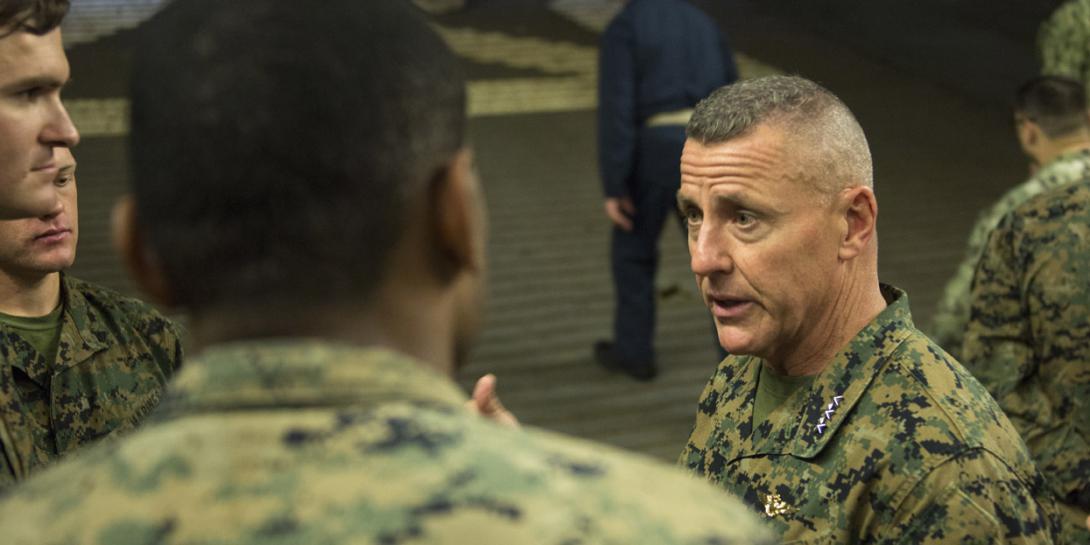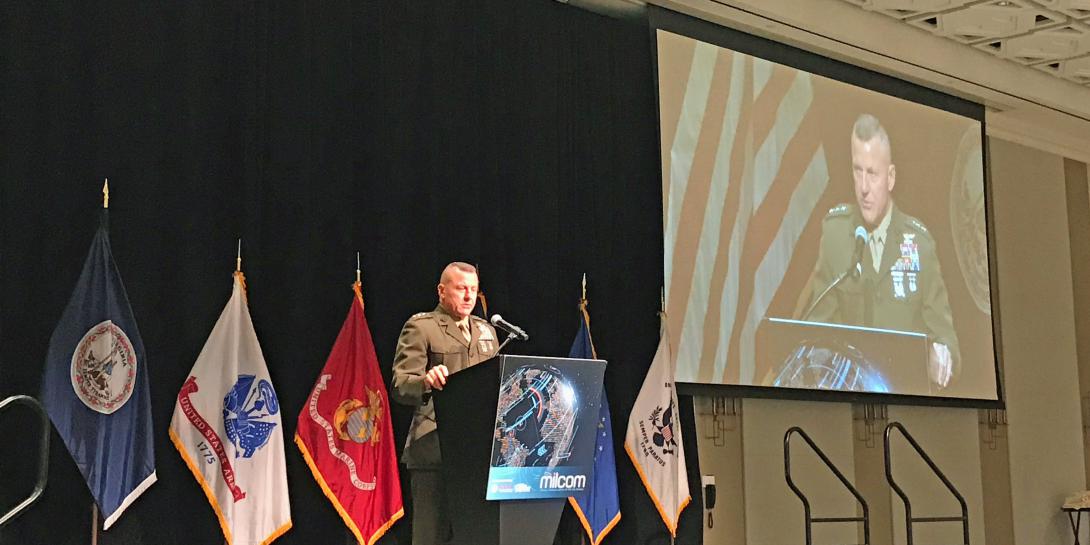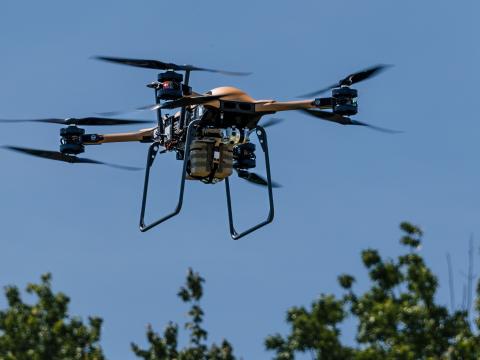All-Domain Marines Take to the Fleet
Multidomain operations (MDO) are not new for the U.S. military’s amphibious force. The Marine Corps approach of maneuver warfare “easily accommodates multidomain operations,” claimed Lt. Gen. Robert Hedelund, USMC, commander, U.S. Marine Corps Forces Command and commanding general, Fleet Marine Force, Atlantic. “In fact, it is central to that requirement.”
The commander spoke at AFCEA International and IEEE’s MILCOM conference on November 13, offering his take on the service’s progress in multidomain operations. In Gen. Hedelund’s view, the evolution of future Marine Corps multidomain operations will come as part of the service’s shift to train and equip as Naval expeditionary forces, and the Marines’ preparations to operate inside actively contested maritime spaces in support of fleet operations.
“The role of the Marine Corps Forces Command is changing,” the general explained. “[With] our two roles, one is the revision of fleet Marine forces worldwide, and the other is the Marine Corps Forces Command role of generating forces for the joint commander. Those roles are shifting. What you'll see is our FMF [Fleet Marine Force] role will increase, while our MARFORCOM role or Marine Forces Command role will contract over time. That's just a function of where we will put emphasis, if you will. When you view this in an all domain perspective, you have to think differently about what Marines are trained to do and how they get to the capability of embracing and leveraging multidomain operations.”
LtGen Robert F. Hedelund, @USMC Commander,
— Kimberly Underwood (@Kunderwood_SGNL) November 13, 2019
U.S. Marine Corps Forces Command @marforcom: Our enemies will attack our SATCOM and support nodes, and they will continue to conduct influence operations #MILCOM pic.twitter.com/H4Vm4E2nWB
In this growing effort of providing fleet marine forces as a Joint maritime component, the general reports to Adm. Christopher Grady, USN, commander, U.S. Fleet Forces Command, Gen. Hedelund said. The Navy’s new chief of naval operations (CNO), Adm. Michael Gilday, who took the helm in August from Adm. John Richardson, is hastening the transition to fleet-centric warfare, the general emphasized.
“For our Navy-Marine Corps team to be ready to win by rapidly and effectively operating forward with agility and flexibility in all domain battle space, it is a tall order,” Gen. Hedelund acknowledged. “It's clear that great power competition in the maritime domain requires an integrated and distributed multifleet operation. The fleet Marine force will contribute to this by integrating with the Navy at every echelon. We're in deep discussions and planning for that today.”
The service is engaging with the Navy to improve interoperability, especially through exercises, such as the Island Marauder 2019 event in Hawaii in September, where warfighters tested advanced command and control (C2) solutions.
“During this demonstration our young Marines experimented with emerging capabilities and surrogate systems to overcome interoperability issues, explore concepts of employment and provide feedback for program managers,” Gen. Hedelund continued. This is just one small example of what is occurring across the fleet and everywhere.”
Successful C2, however, hinges on a network that supports a distributed maritime naval force—a network the services are pursuing. “We have our sharpest minds on it…and this network will integrate seamlessly with Joint networks from the tactical edge, to around the enterprise, in order to unleash lethality and ensure resiliency,” the general stated. “While I am the least qualified to discuss the infinite details of this work, the objective network will holistically address infrastructure processing, power, digital storage, network transport and IT [information technology] cyber services necessary to accelerate the kill chain while integrating with our joint, partner and Naval forces. We think this should be a component of the Naval tactical grid, which will help us improve lethality and enhance our decision making on the capability.”
The commander added that the service is moving away from exclusive technologies. He warned the industry that the military is working to “avoid the trap of investing in hugely expensive and exquisite niche capabilities that don't deliver on promises,” Gen. Hedelund stated. “We will push the Naval force toward smaller, lower signature and more affordable platforms capable of hosting an array of lethal and nonlethal capabilities.”





Comments